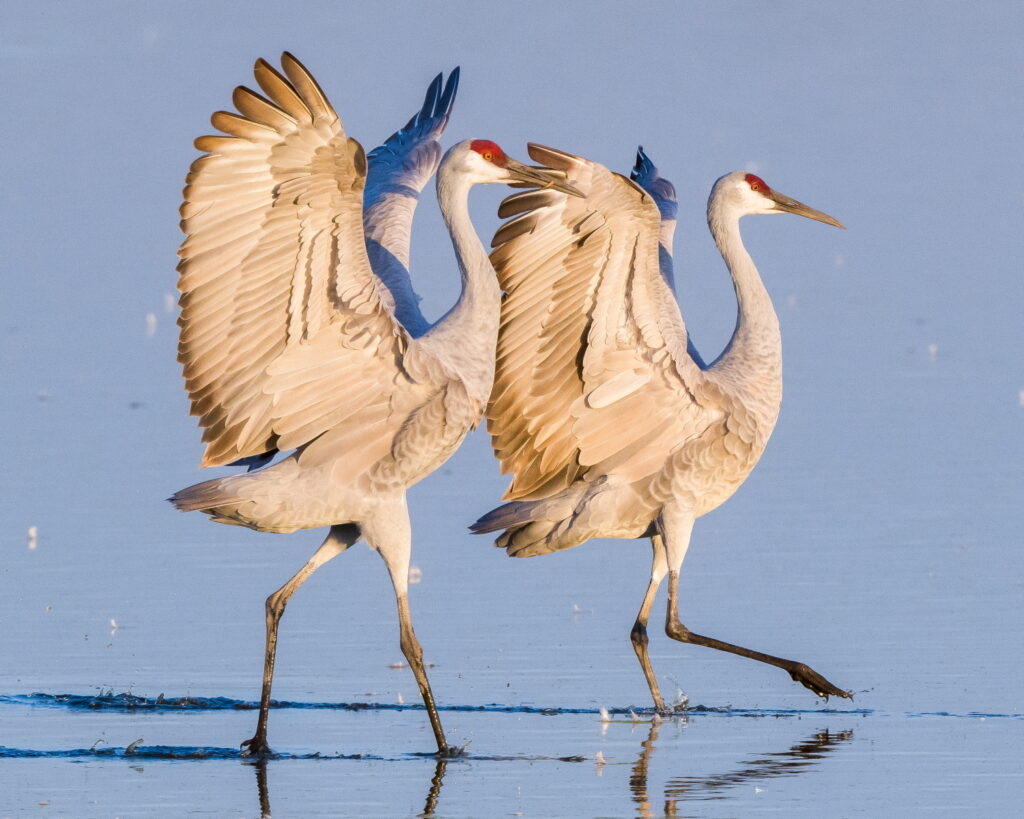The California Pacific Flyway is a major north-south migratory corridor for birds in the Americas, extending from Alaska to Patagonia.

One of the most iconic species migrating along the Pacific Flyway is the Sandhill Crane. These tall, graceful birds, recognizable by their long necks, gray plumage, and distinctive red forehead patches, migrate annually between their breeding grounds in the northern regions (Alaska, Canada) and their wintering grounds, which are often in the southwestern U.S. and parts of Mexico. Similarly, Snow Geese are another prominent species that migrate along the Pacific Flyway. They travel in vast flocks from their Arctic breeding grounds to more temperate wintering areas in the United States and Mexico.
Spectacle of Migration
The sight of thousands of Snow Geese flying in synchronized formations captivates birdwatchers. Further, their sheer numbers and loud vocalizations create a unique experience. This is especially true in California’s Central Valley during the fall and winter months. In addition, the Pacific Flyway is one of North America’s four major migratory bird routes making it a major wildlife habitat. It stretches along the western part of the continent, from the Arctic to Central and South America. This vital corridor supports millions of birds during spring and fall migrations. Birds travel between northern breeding grounds and southern wintering habitats.
Importance
The Pacific Flyway is crucial for hundreds of bird species. It includes waterfowl, shorebirds, raptors, and songbirds. Therefore, this route crosses diverse ecosystems including tundras, forests, deserts, wetlands, and coasts. Each stop provides food, shelter, and rest stops for migrating birds.
